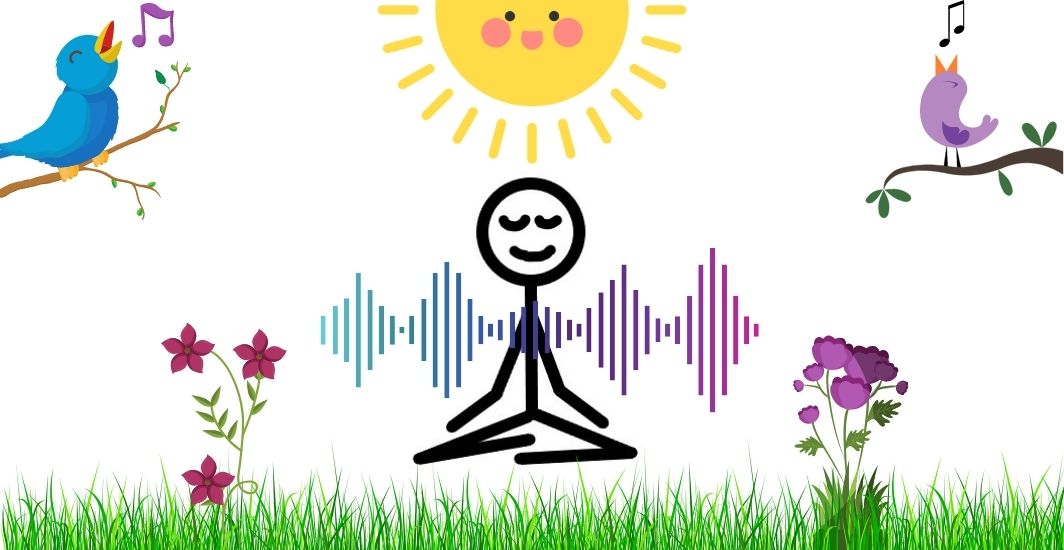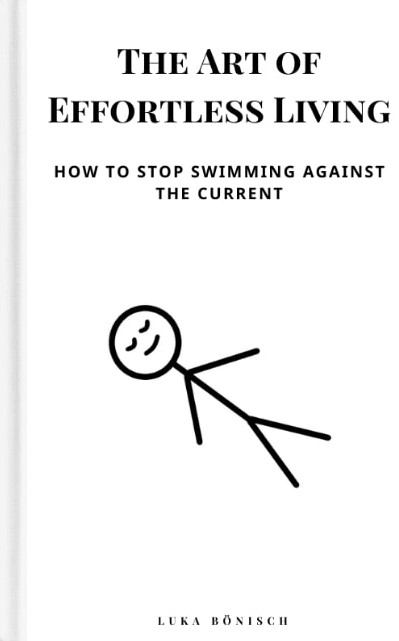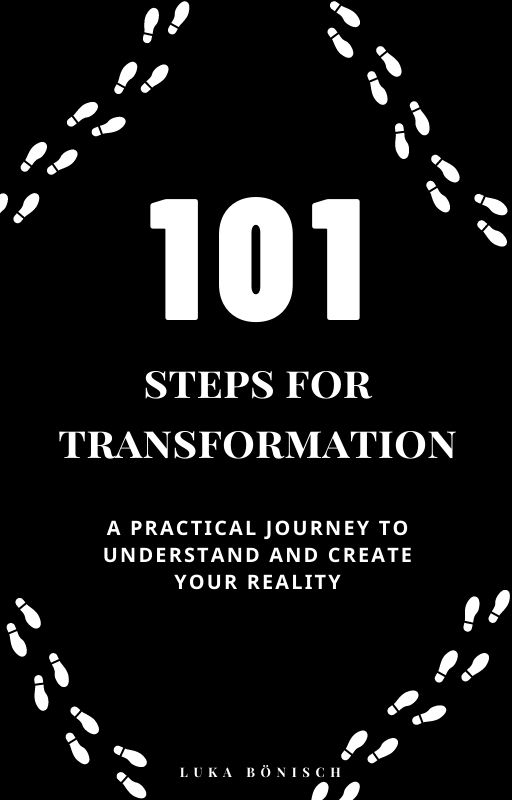What is Open Awareness?
Open awareness can be described as the flow of pure experience interconnected with the rest of reality.
Other than that open awareness
• is a mindful mode of perception accompanied by a calm and receptive state.
• cultivates an awareness of the mind itself (the mind can observe its own state and activities).
• enhances sensory perceptions and bodily sensations.
• reframes your current experience of self. You place phenomena within your awareness as opposed to them being separate from yourself.
• calms the mind, relaxes the body, and promotes a sense of interconnection with the rest of life.
Open awareness can be visually represented through the image of a zen circle (Ensō).

This depicts the connection between inner and outer through the open space in the circle. And this circle is representative of cyclical movement and infinity.
You can practice open awareness in your meditative practice. And the more you practice it the more you will embody it.
This means that with practice open awareness will become your natural state of being.
The following information is adapted from the open awareness handbook, which you can download for free.
The Benefits of Open Awareness
Many people are in a continuous state of stress and anxiety. And this can eventually lead to burnout.
Usually, stress, anxiety, and burnout are accompanied by a particular mode of perception. This mode of perception is called tunnel awareness.
In tunnel awareness, your attention is completely focused on the problem or unpleasant situation.
Your focus is narrowly fixated. Hence, you are unaware of what else is possible or achievable in this situation.
This is a reinforcing cycle. Your problems arose because of tunnel awareness and remain problems because of this limited perception.
Now, this is where open awareness comes in.
It’s a way to embody a broader perspective. And from this expanded as well as interconnected sense of self you can address the situation more mindfully and resourcefully.
Therefore, open awareness is a simple yet profound way to deal with stress, anxiety, and even burnout when it occurs.
Other potential benefits are increased compassion, creativity, resourcefulness, sense of connection, peace, joy, and resilience.
Opening the aperture of your awareness is a powerful skill to dissolve stressful thoughts and enhance your mental performance.
Opening the Aperture of Your Awareness
Open awareness involves intentionally observing your thoughts, feelings, and sensory perceptions in the present moment.
You can facilitate this type of opening by expanding your perception. And this includes the aspects that are usually on the edge or beyond your conscious awareness.
Hence, these are the aspects that are usually unconscious or disregarded.
You may also say that you become aware of the subtleties of your internal experience.
In addition to this increased internal awareness, you will also become more receptive to the energetic link between yourself and others and the environment.
Although it can be practiced through meditation, open awareness is more than a technique.
It’s a natural mode of being.
One that we find ourselves in when we are completely free of burdens on every level – physical, mental, emotional, and spiritual.
Open Awareness in Practice

When you practice open awareness you bring your attention into the space in between yourself and that which you are experiencing.
If you practice open awareness for the first time it is useful to focus on the more apparent experiences. And from there you progress to more subtle experiences.
Most often the process begins by focusing either on the visual, auditory, or somatic experiences as they unfold from moment to moment.
You choose one of the three sensory modalities and pay attention to it. Then you extend that particular sensory field to include more of what is occurring in the background.
You continue this process until you have extended the periphery of that sensory field as far as you can naturally and effortlessly extend it.
If you choose the hearing sense you might eventually hear that one sound consists of three sounds. Or you might start to hear to constant background humming of the universe.
The point here is not to pretend that you have any particular kind of experience. Rather you prime your consciousness to bring forth more of what is present in the background awareness.
Although every experience is subjective, establishing open awareness can have a profound healing or transformative effect on you.
After extending your awareness outward you embody it in physical form by focusing awareness in the abdominal area.
Through this, you can integrate insights from this expanded state. And often this leads to inspired ideas, solutions to problems, or empowered states.
It’s important to note that this type of progressive extending of awareness is only one way of establishing open awareness.
After some practice, you’ll be able to “drop into” open awareness at the mere intention to do so.
You drop into a calm state where you feel interconnected with the rest of life. And this can in turn cultivate resourcefulness and compassion.
Varieties of Open Awareness
You can establish open awareness through a variety of means. As stated earlier, you may use visual, auditory, or somatic approaches as a starting point.
Next, you use a combination of these approaches to create a multi-sensory experience.
And eventually, you can include even more subtle (e.g. psychic and spiritual) experiences and even a sense of interconnectivity with everything in existence.
These different starting points are there so that every type of person can establish open awareness
Open Vision
Focus your gaze on any object. And then gradually broaden your visual field to include more and more of what is completely to the left and right of your visual field of awareness.
Be aware that objects in your periphery do remain out of focus and therefore somewhat hazy.
The object is not to try and see more.
Rather you allow your visual field to include what is on each side of your visual field – on the left and right simultaneously.
Open Hearing
Close your eyes and pay attention to what you hear going on in the environment around you. Progressively include the sounds that are further away.
Then bring the following idea into awareness:
You are only able to hear the sounds around you and far away due to the fact that your awareness has extended out to those points.
In other words, you hear those sounds occurring within your awareness. Therefore you can experience the sources of those sounds within you (to some degree).
If a helicopter passes by, for example, you hear that sound within your awareness. And as such your awareness can be experienced as extended in all directions as far as that helicopter (which then draws your attention further out as it flies further away).
Allow yourself to experience your extended awareness such that it’s not merely your auditory sense detecting sounds from afar.
But rather your sense of self has extended. Hence, what you have experienced as far outside of you is now experienced within ‘you’.
Open Soma Awareness
Start by focussing on the rising and releasing of the belly with each inhalation and exhalation.
Next, extend the rising and releasing experience to include your entire torso for a few breaths. And then include the entire body.
Experience the rising and releasing of the entire body for a few breaths, as if the entire body was breathing.
Then you extend your awareness to surround your body (like a permeable cocoon) while being aware of how the body feels at the same time.
The one breathing is then felt as both the body and the field of awareness that surrounds it.
You then extend this breathing field of awareness with each inhalation until it includes other people and objects in your immediate environment.
Following that, you can extend the awareness to include people and objects that are anywhere at any time (past, present, or future).
Notes on Using Open Awareness
• Open awareness will bring you more in touch with your unconscious resources.
• Open awareness can activate alpha brain waves to put you in a state of flow.
• You can blend the aforementioned starting points to enrich your experience.
• You don’t need to extend open awareness further than what is necessary to achieve your desired results.
• When learning open awareness you might experience it as a trance-like state. However, with time you’ll experience it more like mindfulness. And then you’ll be able to use it and activate it in a variety of contexts.
• You can use open awareness as an intervention (i.e., to neutralize negative triggers). Or you can establish open awareness before utilizing other psychological interventions.
• After practicing open awareness return to your original object of attention. Here, you should ensure that you feel reoriented (body-centered) before you continue with your activities.
Open Awareness Exercises
There are many different ways to establish open awareness.
Here I have included two options for sitting meditation and two options for walking meditation practice.
Try different exercises and varieties to establish open awareness.
This will assure that you find your preferred method to drop into open awareness. For some, it starts with listening, or seeing, for others with feeling.
After you have become more acquainted with open awareness you can also create your own way to establish it.
Open Awareness Meditation
Option 1
Keep your head facing forward and eyes open throughout the following 6 steps:
1. Extend your visual field of awareness as far as possible to the left and right simultaneously.
2. Sense the entire volume of space that your whole body occupies.
3. Notice the pauses or space between your breaths (continue for at least 30 seconds).
4. Identify the pauses or space between your thoughts (continue for at least 30 seconds).
5. Become aware of the space out of which everything you experience emerges.
6. Experience the space that connects you to everyone and everything in existence.
End by focussing on your breath for at least 30 seconds.
Option 2
Keep your head facing forward and eyes open throughout the following 6 steps:
1. Extend your visual field of awareness as far as possible to the left and right simultaneously.
2. Expand your field of awareness all around you and sense the entire volume of space that your whole body occupies.
3. Notice the pauses or space between your breaths (continue for at least 30 seconds).
4. Bring awareness into the space between you, all people, and everything in the area.
5. Notice how your breath connects you to the unlimited and unifying space that we all share.
6. Observe your moment to moment experience from the perspective of space itself.
End by focussing on your breath for at least 30 seconds.
Walking in Open Awareness
Option 1
While walking, allow your attention to be drawn to whatever passes in the periphery of your visual field.
Naturally, you will also be aware of what’s ahead of you and where you are placing your feet. However, this should not be the main focus of your attention.
There’s nothing specific to focus on. Just pay attention to whatever it is that passes by in both the left and right of your visual field.
Do this for 5 minutes and notice the effect on your present state.
Option 2
Before beginning, take a few comforting breaths and then establish open awareness.
Begin walking mindfully (slowly and attentively). Be aware of each muscular movement that propels your body forward, aware of passing thoughts and feelings, aware of your passing environment, aware of the degree to which you are in open awareness (or not) – all with effortlessness.
If you are distracted, pause your walking, return to open awareness, and continue as above.
The walking meditation is recommended to be done at least once daily for a minimum of five minutes. 20 – 30 minutes is ideal (and longer is fine too).
Final Words
Life is about becoming comfortable in uncertainty. Because we are all facing uncertainty all the time. Just think about how common uncertainty is.
There is way more in the universe that we don’t know than we do know.
And perhaps this is a good thing. If you already knew what was coming around every corner you might think and behave in fixed ways (tunnel awareness).
Ultimately this would limit your perception, spontaneity, and creativity.
If you don’t know what lies ahead then the only thing you can do is get comfortable with uncertainty.
Then you will be able to flow with the natural unfolding of life. And open awareness makes this easier!
Remember, uncertainty is a prerequisite for new possibilities and creativity. Sometimes we just need to get out of our own way to see where we are going and why we are going there.
If you don’t stand in your own way no one stands in your way.
And for this open awareness is a profound and useful skill. So give it a try, you won’t regret it.
△△△
If you want to know more about open awareness, its benefits, possible uses, and exercises, I recommend reading the open awareness handbook. → Free eBook
If you’re interested in experiencing a type of coaching with open awareness at its heart, you can reach out to me here. → Transpersonal Coaching
“We are all faced with series of great opportunities brilliantly disguised as impossible situations.” – Charles Swindoll
Luka
Latest posts by Luka (see all)
- The Supreme Spiritual Practice - March 30, 2025
- Your Life’s Middlemen - March 12, 2025
- Truth Is Simple and Singular - February 1, 2025

